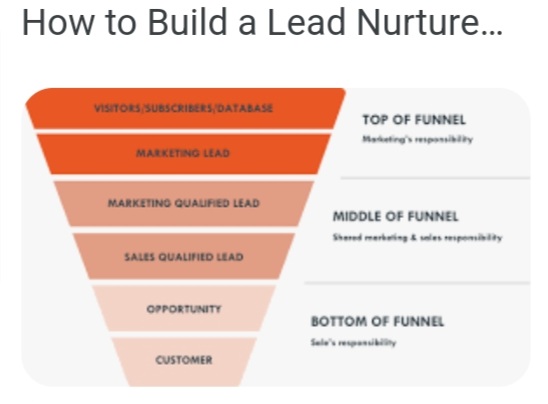
How do you nurture and follow up with your prospects to keep them engaged and motivated?
- Understand their needs and goals
- Segment and personalize your communication
- Provide value and education
- Track and measure your results
- Follow up consistently and timely
- Ask for the next step or the sale
1. Understand their needs and goals
The first step to nurture and follow up with your prospects is to understand their needs and goals. You can do this by asking open-ended questions, listening actively, and taking notes. This will help you tailor your communication and content to their specific pain points and desired outcomes. It will also help you qualify them and identify their readiness to buy.
Add your perspective
Absolutely! Nurturing and following up with prospects is key to building relationships and ultimately converting them into customers.
Let’s understand with an example:
I sell product roadmapping software to product, engineering, and project management teams. You’ve identified a prospect, Sarah, the Marketing Manager at a growing tech company.
Here are nurturing steps:
- Initial Contact & Qualification
- Provide Value
- Offer Expertise
- Space out future interactions, but stay present
For Follow Up:
- Respond Promptly
- Avoid generic messages. Use details from your previous conversations to personalize your outreach.
- Focus on Value
- Respect Time
- Nurturing is a marathon, not a sprint. Be consistent, provide value, & focus on building a long-term relationship.
-Foster Authentic Connections: Build real relationships with prospects by sharing relatable stories and experiences. Establish trust and likability through empathy and genuine interactions. People are more likely to engage when they see you as a relatable individual, not just a salesperson.
- -Patience and Consistent Value: Practice patience and persistence in your follow-ups. Respect the prospect’s decision timeline, offering insights and valuable information without aggressive selling. Regular, non-intrusive check-ins that add value can subtly reinforce your proposition, showing commitment beyond just making a sale.
7 Amazingly Effective Lead Nurturing Tactics:
- Leverage targeted content – Start by working to understand each of your unique buyer personas.
- Use multi-channel lead nurturing techniques – setting up a simple email drip campaign
- Focus on multiple touches – deliver content that helps prospects progress through the buyer’s journey by addressing common questions and concerns.
- Follow up with leads in a timely manner – well-planned call to an inbound lead, it’s far more effective than any volume of cold calling.
- Send personalized emails – tends to produce better results
- Use lead scoring tactics – for determining which leads should be followed up & which leads need to be nurtured more
- 7. Align your sales & marketing strategies
2. Segment and personalize your communication
The next step is to segment and personalize your communication based on your prospects’ needs, goals, and behavior. You can use tools like CRM, email marketing, and automation to create and send targeted messages that address their challenges, offer solutions, and showcase your value proposition. You can also use different channels and formats, such as phone calls, emails, videos, webinars, or social media, to reach them where they are and how they prefer.
Add your perspective
- Personalized communication is so important. Prospects don’t want to feel like they are part of a list. Be sure to research and utilize your prospecting tools to reach out with a personalized touch. The idea is to generate interest, something that appeals to the prospect personally. For example, if your prospect posted something, a genuine comment or follow-up message regarding their post is highly personal and should be genuine.
Start by segmenting your contacts like a Spotify playlist: by industry, behavior, or needs. Then, personalize like a pro. If they’re into AI trends, don’t send them last year’s news—stay relevant!
Remember, timing is everything. Don’t be the overbearing sales date or the one who never calls. Adjust your frequency to their preference. And content? Keep it fresh! Mix in articles, videos, or an occasional well-placed meme to spice things up.
- In short: segment thoughtfully, personalize cleverly, and communicate just right. Keep it engaging, and watch those prospects turn into partners. Here’s to making every message count! 🚀
- Segmentation and personalization are key to resonating with your prospects. Segmentation enabled you to craft personalized messages that speak directly to the pain points and interests. Sharing RELEVANT case studies or success stories related to their industry significantly increases your engagement. Helps build rapport.
3. Provide value and education
The third step is to provide value and education to your prospects throughout the nurturing and follow-up process. You can do this by sharing relevant and helpful content, such as blog posts, ebooks, case studies, testimonials, or demos, that answer their questions, solve their problems, or inspire them. You can also offer free consultations, assessments, or trials to demonstrate your expertise and credibility. The goal is to position yourself as a trusted advisor and a thought leader, not just a salesperson.
Add your perspective
- In my experience, to truly captivate prospects, pour value into every interaction. Offer content that doesn’t just speak to their needs but elevates their understanding—blogs, case studies, insightful testimonials. Empower them with tools like consultations or trials, showcasing your unwavering expertise and value as a thought leader.
Don’t just sell, become a trusted advisor. Share relevant insights, industry reports, or even success stories demonstrating your solution’s impact. This positions you as an expert, not just someone pushing a product. Value-added content makes prospects feel empowered and excited to envision how your solution fits into their own success stories.
- Tip: Offer a free, no-obligation consultation where you focus on identifying their challenges and brainstorming solutions, whether they ultimately buy from you or not.
4. Track and measure your results
The fourth step is to track and measure your results to see what works and what doesn’t. You can use metrics like open rates, click-through rates, conversions, feedback, or revenue to evaluate the effectiveness of your nurturing and follow-up campaigns. You can also use tools like analytics, surveys, or polls to gather insights and feedback from your prospects. This will help you optimize your strategy, improve your performance, and increase your ROI.
- Use analytics to see what’s working (or not). This could be email open rates, content engagement, or feedback during calls. Adjust your strategy based on real data, not just gut feelings.
- Regularly tracking and measuring your results is vital. Otherwise you can’t refine your approach. AI analytics tools can allowed u to monitor engagement metrics, such as click-through rates and time spent on content. Through this, u can identify the types of content that resonated the most.
5. Follow up consistently and timely
The fifth step is to follow up consistently and timely with your prospects to keep them engaged and motivated. You can do this by setting up a follow-up schedule and sticking to it. You can also use triggers, such as actions, events, or milestones, to prompt you to reach out. For example, you can follow up after they download a resource, attend a webinar, or request a quote. The key is to be persistent but not pushy, and to add value at every touchpoint.
Add your perspective
Lose the term “Just following up” in your emails but never stop following up.
5 reasons why.
- It helps you show your recipients you value them
- It helps you demonstrate professionalism
- It helps you stand out from the crowd as not all companies keep up with their follow-up emails (this can be one of your competitive advantages)
- It helps you create a positive customer experience
- It helps you build strong, long-term customer relationships
Just some evidence to go alongside that …
Studies indicated an 18% response rate to the first email, 13% to the fourth, and 27% to the sixth.
- These kind of patterns are common. Sometimes it’s just a matter of getting your email to the correct inbox at the right time.
- Automating follow-up triggers is important to ensure you are reminded to conduct personalized follow-up. The last thing you want to do is send the “checking in” email. Make your follow-ups personal and relevant, and most importantly, about the prospect!
Gentle persistence is the key!
- I might be odd because I LOVE someone who follows up and will rank them or their service 10x’s higher than someone who does not. There’s an art to following up without being a pest or pushy. You must be relatable and speak about something other than the actual sale. Remember something you spoke about and refer to that before asking to check in. This approach aims to build rapport, trust, and credibility over time, leading to a higher likelihood of closing deals.
6. Ask for the next step or the sale
The final step is to ask for the next step or the sale when your prospects are ready. You can do this by using clear and confident calls to action, such as booking a meeting, signing a contract, or making a purchase. You can also use urgency, scarcity, or incentives to create a sense of FOMO (fear of missing out) and encourage them to act fast. The goal is to close the deal and turn your prospects into customers.
- As far as I remember, the crescendo of the sales process is the ask—be it for the next step or the close. Purposeful calls to action, suffused with clarity and confidence, pave the path from prospect to customer. Employ urgency judiciously; incentives should enhance value, not pressure. The ask isn’t just a question, it’s an invitation to partnership. Nothing is as exiting and yet so chill if you have done the job before you ask.
- Be clear in understanding the customer’s process- different stakeholders, decision influencers, decision makers at every step. This map made through direct and indirect question, will help you in field to know how to make the deal sweet for pushing the sales closure. It’s not necessarily discount- it could be education, training, cross-reference, delivery, payment terms, regulatory adherence etc




